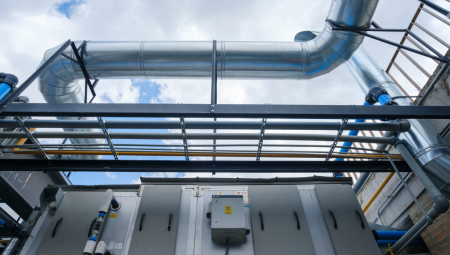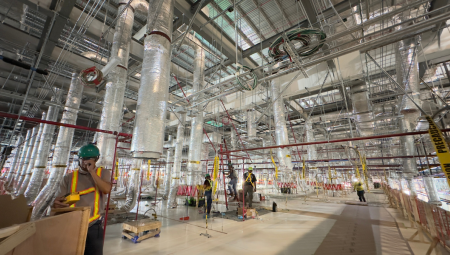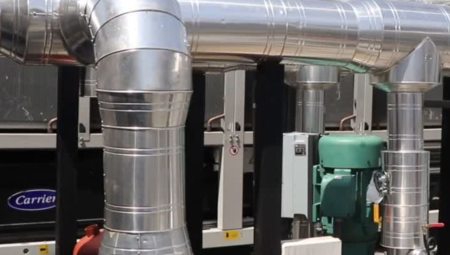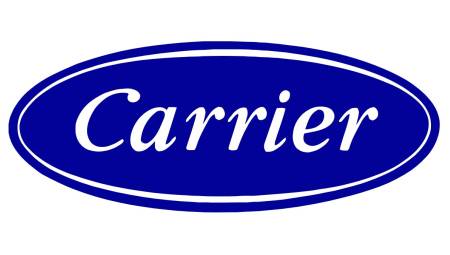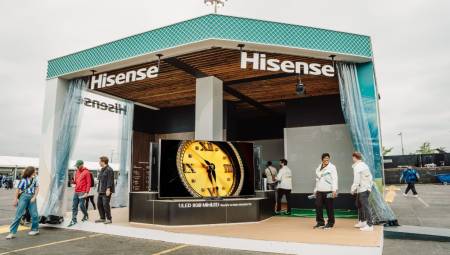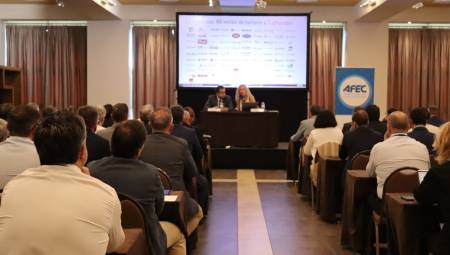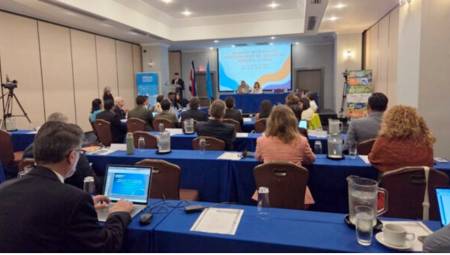By: Al Maier*
 Returning to what had already been mentioned in the first part of this article, it is important to remember that the main failure modes of a TXV valve occur when it feeds a lot of refrigerant (supercharging, which was mentioned in the last edition), when it is not feeding enough refrigerant (underfeeding) or when it alternates from feeding too much to too little (fluctuation). These last two types of failures will be analyzed below.
Returning to what had already been mentioned in the first part of this article, it is important to remember that the main failure modes of a TXV valve occur when it feeds a lot of refrigerant (supercharging, which was mentioned in the last edition), when it is not feeding enough refrigerant (underfeeding) or when it alternates from feeding too much to too little (fluctuation). These last two types of failures will be analyzed below.
Underfeeding
Underfeeding occurs when the amount of refrigerant that feeds the evaporator completely evaporates long before discharge. Symptoms of this phenomenon include an insufficient cooling effect —warmer than the desired charge temperature— high superheat in evaporator discharge and low suction pressure. Causes of undernourishment include:
• Moisture: Any moisture in the system can freeze in the TXV, preventing the valve from working properly. If you suspect something like this is happening, install a good quality filter dryer for the liquid line. It is also advisable to install a humidity indicator on the liquid line so that the technician can monitor the humidity level in the operating system.
• Dust or debris: Any foreign material that passes through the inlet filter can be embedded between the pin and the PORT of the TXV, preventing it from closing properly. Again here, a high-quality filter dryer must be installed in the system to prevent the circulation of dirt and debris that cause system failures.
• Insufficient Delta P in the valve: If the pressure drop in the valve is too low, the capacity of the valve is reduced. This sometimes happens during operation at low ambient temperatures when the head pressure is allowed to "float" with the environment. To correct this, raise the pressure of the head or replace the valve with the one with which it has the highest capacity.
• Low load system: If a system is under load, the superheater will be high, the suction pressure will be low, but still the system will not provide sufficient cooling. A visor installed on the liquid line immediately before the TXV is the best way to determine this. The "bubbles" in the viewfinder are a clear indication that the system is under load. In residential AC systems, manufacturers include a table indicating what the correct pressures are under different operating conditions. Those tables can be used to determine if the system load is correct. Additionally, measure the subcooling at the TXV entrance. If there is no subcooling, that is also an indication that the system load is low.
• Instantaneous steam at the TXV inlet: Any restriction in the liquid line leading to the TXV inlet will produce a pressure drop that will result in the formation of instantaneous vapor. Since the density of the gas is much lower than that of the liquid refrigerant, the instantaneous vapor entering the TXV will reduce the capacity of the valve and produce a high superheat and underfeeding. Instant steam can be found in the following forms:
1. Look for frost or moisture in the liquid line: As instant steam forms, it produces a cooling effect that cools the area around it. Since the fluid line is usually warm to the touch, a cold spot is usually a sure sign that there is a restriction at that point.
2. If a viewfinder is installed, look for bubbles: a direct stream of bubbles indicates either a low charge or vapor in the liquid line.
3. Check the subcooling: If there is subcooled liquid in the condenser discharge, but not at the evaporator inlet, determine where you have lost the subcooling. In certain cases, the liquid line may be smaller than required or heat exchange may have been lost from suction liquid, resulting in a loss of subcooling.
• Plugged equalizer line: If the equalizer line is plugged, the pressure under the diaphragm may be greater than the actual pressure of the evaporator, resulting in a valve that tends to be in a more "closed" position. To correct this replace or repair the equalizer line.
• Valve too small: Check that the valve is the correct size for the system. Replace with the valve of the appropriate size.
• Superheat set too high: On the external adjustment valves turn the adjustment stem in a right-left direction to reduce the superheater.
• Power module failure or partial loss of load: If the power module has lost all or part of its load, it will not generate enough pressure to cause the valve to "open". A technician can verify this in the field by holding the bulb in hand while monitoring the operating conditions of the system. The heat of the hand should cause the pressure to rise, which will generate greater refrigerant flow and an increase in the suction pressure. If no changes are observed, the valve may have lost its load. This technique is valid only if the system is properly loaded and the valve has high-quality liquid coolant at the inlet. If it is discovered that the valve has lost its load, the power module should be replaced. In some cases the module is integrated into the TXV, in this situation the entire valve must be replaced.
• Cross-environment effect: Some TXVs have special loads designed to limit the maximum operating pressure of the system. They are designed with a "W" in the load code followed by a number—for example HW100. With loads of this type, the bulb should always be cooler than the power element or valve body. Otherwise, the load can migrate from the bulb to the power element with the consequent loss of control. If this is suspected, replace the valve with a non-maximum evaporator pressure load—in this example, an average temperature of the refrigerant R-22 (HC) or a heat pump with R-22 (HCA).
• Clogged filter: The presence of dirt or debris in the coolant going to the valve can cause the filter to clog. Remove and clean the filters and add a high-capacity dryer to the liquid line to prevent that from happening again.
Fluctuation
The fluctuation occurs when the TXV is opened and closed alternately causing large fluctuations in the superheat. This may be caused by the difference in system response time relative to the TXV. Loads of different types have been designed with different time constants to minimize this effect, but other factors—such as sudden changes in load or low-load operation—can also impact it. Causes of fluctuation include:
• Oversized valves for the application: a valve too large for the application will tend to oscillate. If this is suspected of happening, replace the valve with another valve of the correct size for the application.
• Bulb location: Check that the bulb is not located downstream of an oil trap "P" on the suction line. Relocate the bulb if you find this. It may also be useful to insulate the bulb to make sure it is not affected by an air current.
• Refrigerant distribution: in systems with distributors it is not uncommon to have different circuits with very different loads from each other. This can result in some circuits eventually becoming sufficiently supercharged to allow the liquid to reach the bulb. This, of course, will force the TXV to close until the superheater is achieved again, at which point it will open. Correcting this requires eliminating the distribution problem.
• Superheat adjustment: TXVs have a superheat set from the factory to function properly on most systems. Sometimes, however, you may have to adjust the factory settings.
In most cases, raising the superheater will reduce the fluctuation. Turning the adjustment screw in a left-right direction will raise the superheater.
• Moisture: The presence of some moisture in the system can freeze in the TXV, preventing the valve from working properly. As the moisture freezes and then melts, the superheater will vary erratically. It is recommended to use a high-quality dryer in the liquid line to avoid this.
*Al Maier is vice president of application engineering at Emerson Climate Technologies Flow Control Division. For more information, call: 314-569-4680 or email: [email protected].


